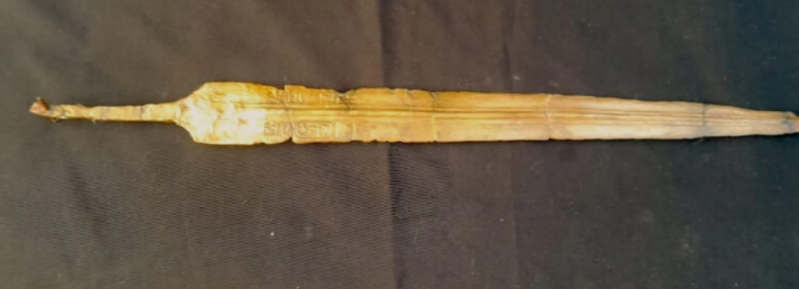
A fortress from the reign of the Egyptian pharaoh, popularly although not definitively associated with the book of Exodus when the Israelites were enslaved, has been discovered by archaeologists.
According to Biblical Archaeology, the Egyptian Ministry of Tourism and Antiquities confirmed the finding from the era of Ramesses II (1279 - 1213 BC), known as Ramesses the Great, and located in the north west of the Nile Delta, 60 miles south of Alexandria.
Biblical Archaeology detailed the fortress discovered as a barracks with warehouses for storing weapons and foods. All the mudbrick buildings grouped in two sides.
The archaeologists also discovered weapons, tools and jewelry presumably from the pharaoh's era, such as necklaces constructed with semi-precious stones, a bronze ring and scarab seals. There were two limestone blocks with the name of Ramesses II inscribed in a hieroglyphic and also the name of an official called “Bay.”
A discovery was also made in a small barracks room of a bronze sword with a cartouche of Ramesses II, which has been preserved. It is thought the sword belonged to a high ranking officer and intended for combat not decoration.
“The weaponry demonstrates the place was well armed and may even have been able to produce some weapons on site,” Peter Brand, a professor at the University of Memphis in Tennessee, told Live Science.
The fortress structure itself was likely used to defend against Libyan forces in the west and sea faring invaders from the Mediterranean sea, according to the publication.
The Bible mentions the Ramesses as a place, arguably named after the Egyptian ruler. Exodus 1:11 for example lists Rameses as one of the “store cities for Pharaoh.” Genesis 47:11 talks of Joseph’s father and brothers being given property in “the best part of the land, the district of Rameses, as Pharaoh directed.” Numbers 33:3 says the “Israelties set out from Rameses.”
Academics disagree about the identification of the pharaoh appearing in the narrative of Exodus. Ramesses was typically the “Hollywood pharaoh” according to Christopher Eames, writing comprehensively about the debates concerning the Egyptian king in an article entitled “Who was the Pharaoh of the Exodus?” for the Armstrong Institute of Biblical Archaeology.
“One of the most popular theories claims that the pharaoh during the Exodus was Ramesses II, a 13th-century pharaoh,” wrote Eames. “Despite this popular identification, numerous biblical passages—including the singular verse highlighted by Ramesside proponents (Exodus 1:11)—reveal that neither Ramesses II nor any of the Ramesside Dynasty pharaohs could have been the Exodus pharaoh.
“When it comes to biblical chronology, the biblical text clearly points to the Exodus occurring during the 15th century b.c.e.—within the Thutmosid Dynasty.”
Eames admitted to “plenty of options” for experts and enthusiasts trying to identify the biblical pharaoh. In his opinion, the identity of the Egyptian king was Amenhotep II, not Ramesses II.
“Digging down into the details, however, it becomes evident that no other Egyptian period, dynasty and pharaoh gets nearly as close to matching the biblical text as the New Kingdom period’s Thutmosid dynasty pharaoh, Amenhotep II.
“And so, amid the multiplicity of theories about the Exodus pharaoh’s identity from scholars, ancient and modern, should it come as any surprise if the very earliest historians to mention his name—Egyptians, no less—got it right? More than 2,000 years ago, Manetho and Chaeremon —both Egyptian priests and historians—insisted that the pharaoh of the Exodus was, as they identified him in their Ptolemaic Greek language, a pharaoh named Amenophis.”





